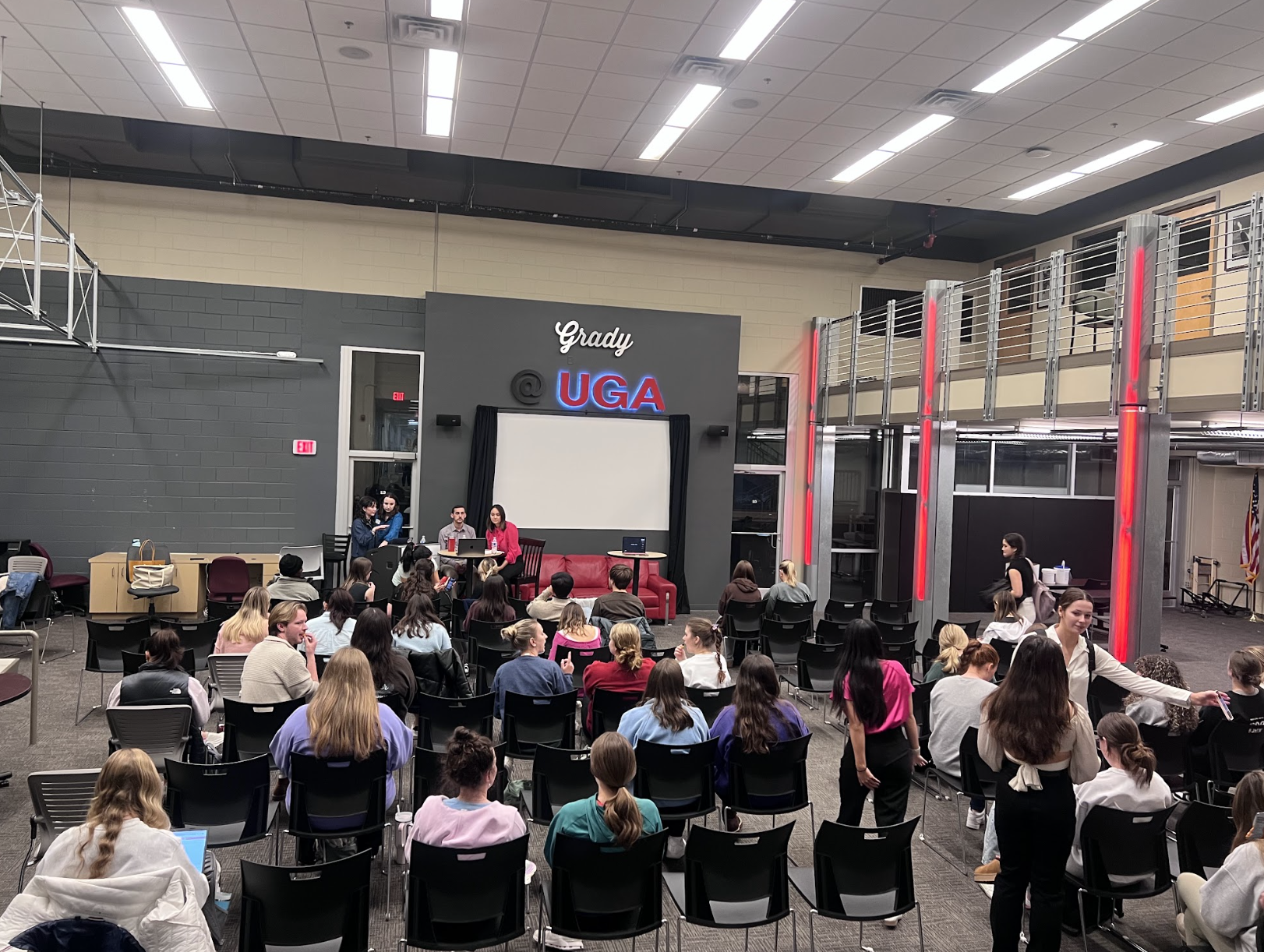The Evolution of DEI in PR
by Anna Kobbe
Beginning in the 1960s with the rise of the Civil Rights Act, diversity, equity and inclusion (DEI) practices were initially held as hours-long training sessions that proved to be counterproductive due to negative attitudes from employees. It was not until the early 1990s however, that DEI was actually discussed in the workplace. It was during this era that research was conducted on inequity and emotional intelligence, which emphasized the importance in creating a safe, inclusive workplace.

PRSSA at UGA hosted a panel of professionals to speak on DEI.
A concrete example of DEI changing drastically in comparison to the earlier stages of DEI integration was the success of the 2021 Doritos #AmplifyBlackVoices and their Solid Black campaign. During this campaign, Doritos contributed $5 million to supporting Black artists and allowing their stories to be heard. Their campaign received attention from AdWeek, Marketing Dive, and various other PR organizations. This DEI initiative was a great example to other PR companies that an inclusive campaign generates positive impressions from audiences as well as stakeholders.
During the PRSSA panel that spoke on DEI leadership, Senior Vice President of Corporate Affairs at BCW Global Bruno Giordano pointed out that 10-15 years ago, bilingualism was not nearly as common as it is in today’s world. In fact, Giordano stated that there was a shadow placed on people whose first language was not English. However, he emphasized that bilingualism is now considered an asset in corporate America, and several companies embrace multicultural individuals.
A major difference in the topic of DEI is that now more than ever, companies, industries and businesses are openly discussing their roles in diversity, equity and inclusion. DEI is no longer a hushed whisper or idea thrown out into the world. Instead, DEI is an integral part of promoting diverse perspectives, allowing for equal opportunities and enforcing inclusivity. Across multiple PR industries, DEI is a requirement that all employees must take into consideration when conducting research and curating campaigns.
Though DEI in the public relations industry has vastly evolved since the 1960s, there is still work to be done. According to PRSA, the industry still struggles to bring in young Black, Asian and Hispanic professionals to pursue a career in PR. As this lack of diversity persists, the DEI Committee aims to increase visibility of DEI standards and work alongside the PRSA foundation to further diversity by providing funds for research projects and initiatives for PR firms nationwide. As this industry continues to grow and change, one crucial point to keep in mind is to offer inclusive, diverse perspectives for all demographics, rather than one single demographic.